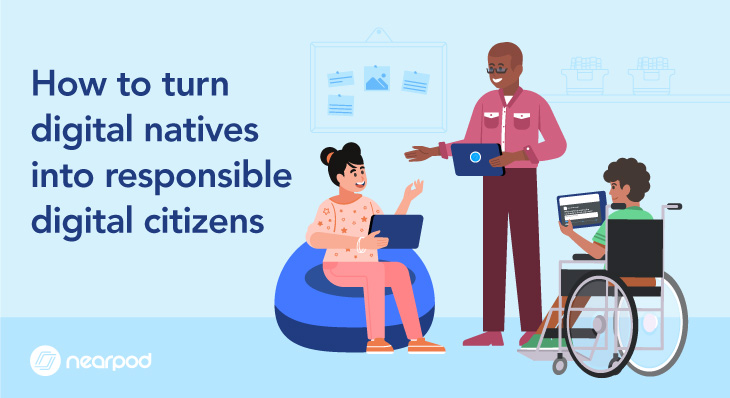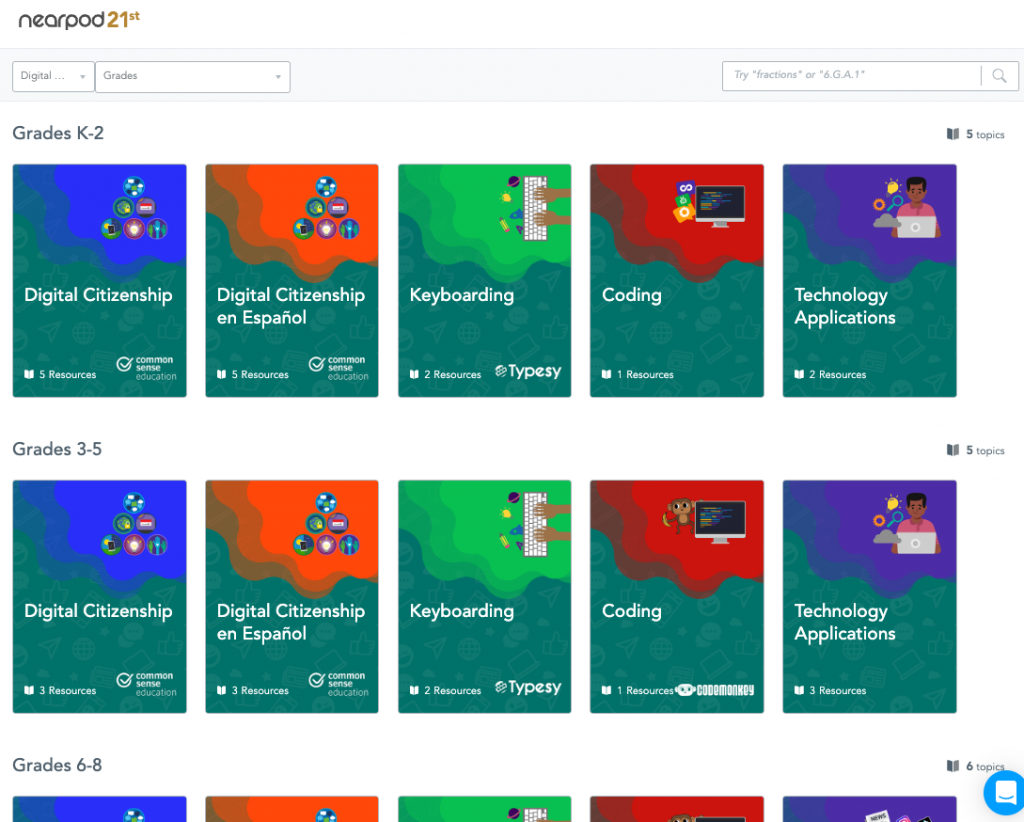
How to turn digital natives into responsible digital citizens
Digital Citizenship: It’s a lot like the regular citizenship character trait you probably learned about in grade school, but with a whole new set of rules. Digital Citizenship is defined as being responsible, respectful, and safe online. But that’s a very surface-level definition of what has recently become a very deep, often complicated, topic to navigate. Teaching digital natives how to become responsible digital citizens is important for 21st-century learners.
What is a digital native?
According to Cambridge Dictionary, a digital native is a person who is very familiar with digital technology, computers, etc. because they have grown up with them. As of right now, this group includes Generation Z and Millennials. For these current and future generations, learning digital citizenship skills is significant in this growing digital world.
Today’s students are digital natives
Today’s students are digital natives and technology is their first language. Regardless of what kinds of limits and parameters adults set, our students are going to be online a lot throughout their life. Students as young as 3 are using tablets and students as young as middle school are enrolled in online classes.
So rather than only filtering or limiting things online (which we still need to do!), it’s essential that we also teach students to be productive members of the online community and how to process their emotions for all those times when we aren’t watching.
It’s essential that we also teach students to be productive members of the online community, for all those times when we aren’t watching. - @ElementaryGeekClick To TweetWhat is digital citizenship for students?
Common Sense Education describes digital citizenship as all aspects of your presence online, including:
- Identity
- Privacy & Security
- Relationships & Cyberbullying
- Copyright & Fair Use
- Information Literacy
- Digital Footprint
It’s amazing how many of our students are using TikTok, Instagram, Facebook, Twitter, and YouTube daily. Think of all the crazy things you come across scrolling through your Facebook feed each day! Now, imagine trying to process all those dramatic posts, negative comments, product advertisements, photoshopped images, and fake news articles as a child or teenager who is simply trying to make sense of their world. If we have adults commenting irresponsibly or believing everything they read on the internet, what are students going to do? This is where digital citizenship comes in.
How to turn digital natives into responsible digital citizens
Teach digital natives healthy digital habits

There’s a lot that we can teach about digital citizenship, but here are a few big points I always try to hit with my students:
- Limit personal information shared online.
- Think before you post! Your online presence is like a digital sharpie, it can never truly be erased.
- Understand where your information is coming from and cite it correctly.
- Know when to trust a source and when to check your facts (#fakenews).
- Respect the person behind the screen.
Like anything in life, digital citizenship takes practice. As teachers, we’re in a unique position to show our students how technology can be used to educate, create, collaborate, and engage with the world in entirely new ways. Every time technology is integrated into a lesson, remind them of those healthy online habits. With enough practice, we will inspire a new wave of responsible digital citizens.
Digital citizenship resources
Nearpod’s 21st Century Readiness K-12 Program offers resources to embed 21st-century skills like SEL, digital citizenship, and college and career readiness into every classroom. The Digital Citizenship Curriculum collection includes technology applications, coding essentials, and media literacy. We’ve teamed up with experts like Common Sense Education to create these resources that are sure to put your students on the right path.
Below you’ll see a preview of our digital citizenship resources included in the 21st Century Readiness Program. There’s something for every grade level and topic included. Every lesson includes interactive videos and activities that you can launch to extend or re-teach.
New to Nearpod? Sign up for free here to access these lessons!

Kali is a tech-savvy elementary teacher whose passion for all things STEM fuels her innovation in the classroom and inspires other teachers to begin their own #edtech adventures.










